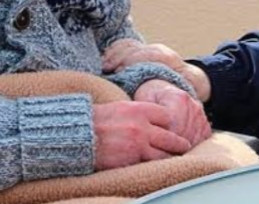
World day of the sick – I was sick and you visited me
Among the works of mercy that the Church suggests we perform is caring for the sick

Valuable artists also wished to express themselves on this theme through their figurative language. The 19th century makes a rich, sometimes bleak, sometimes languid panorama of the environments and feelings that pervade the human soul when faced with the sick. From the Neapolitan school to Gericault, who for the first time highlights mental illnesses and presents us with his 10 paintings where the sick person imposes himself on the viewer with his insoluble evil, and makes us realize that we have much to learn.
In the Gospel we read that Jesus assists and comforts the sick, his cure is healing, and he leaves us a great teaching with the parable of the Good Samaritan. Not insensitive to this theme was Vincent Van Gogh, who in the year of his death developed several canvases with religious subjects. In this 1890 work, two months before his death at age thirty-seven, he reconstructs the episode with many details that reveal his emotions. The man in the foreground tries to get a poor unfortunate man on his horse, who clings to his rescuer with an embrace, while the horse, patiently stable on his legs, also seems to go along with this gesture. In the background the dirt road, sun-scorched fields, and mountains that give no continuity of space, close the way where the Levite and the priest with their backs turned away.

Most likely he feels the wounded man and at the same time identifies himself with the rescuer who, however, fails to help himself and who also looks very much like him here in physiognomy. In this work Van Gogh according to his style, uses a light that strikes relentlessly and results in a distortion of the elements, so much so that it expresses tension and anguish, that which he experiences between the advance of his illness and society. When he painted this canvas Vincent was living through the difficult phase of his illness, however, his vocation was not to be a painter, but to be close to the most desperate, as when he had labored with great zeal among the typhoid patients. Painting was a therapy for him, the multiple brushstrokes dense with contrasting colors, the broken lines, generating that sense of bewilderment and transfusing into the canvas the drama of life struggling against illness.

It is an expression of the existential anguish of the sick person who, if not supported by faith will never overcome the suffering of illness whatever it may be. Today man is in great need of the help of others, but also of prayer and the word of God because assisting the sick is much more challenging because it is part of the relationship that Jesus wants with his neighbor: I was sick and you visited me.
Paola Carmen Salamino
Photo
- Paola Carmen Salamino
